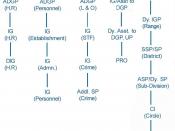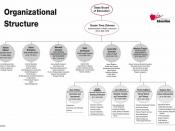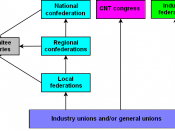Introduction: importance of business design
Organisations today are under intense pressure to be better, faster, and more competitive. This pressure comes from the combined effects of the globalization, acceleration of technological & social change, the dematerialization of economic activity and the emergence of new trends toward a service society and the information age. These trends have dramatically increased the degree of competition in all industries, while forcing firms to cope with product innovation and technological change. In today's competitive business environment, without having the effective organizational design, a business will not be able to stand in the market. "Organisation design is concerned with construction and changing of an organisation's structure to achieve the organization's goal." (Robbins & Barnwell, 2006ï¼Âp8) An effective organizational design needs to accommodate a wide range of elements, for example; pursuit of the organization's goals, organization profitability and the quality of life for those people in the organization.
Robbins and Barnwell (2006, p76) define organizational effectiveness as "the degree to which an organization attains its short- and long-term goals, the selection of which reflects strategic constituencies, the self-interest of the evaluator and the life stage of the organization." This essay will highlight the limitations of currently popular structure designs and also discuss some useful approaches for management to design an effective organization at the start of the 21st century.
Traditional Approaches
Adhocracy
Adhocracy is "an organizational form characterized by high horizontal differentiation, low vertical differentiation, low formalization, intensive coordination, and great flexibility and responsiveness."(Robbins & Barnwell, 2006, p131) It can be easily discovered from the definition that the adhocracy type of organization that is organic in structure with little formalisation of behaviour and in which skilled specialist employees are grouped in functionalist units for convenience, and deployed in small project teams. Experts are distributed throughout the structure,


